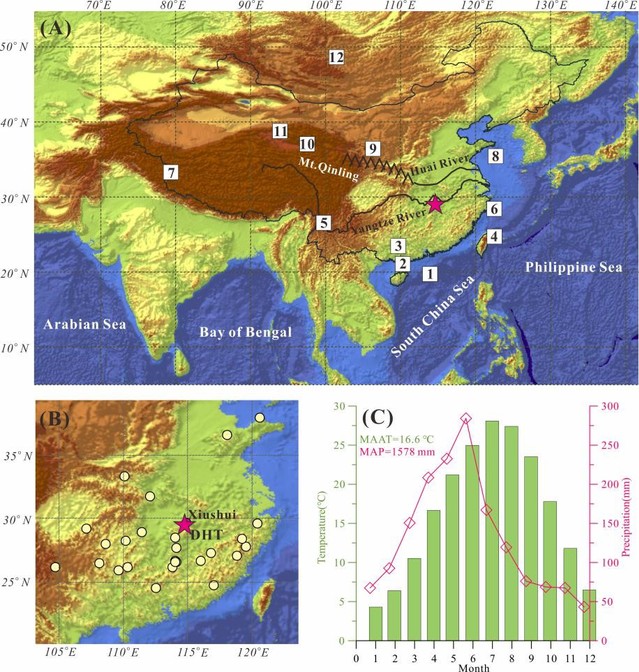Liping Tian a, b, Cong Chen b, *, Kangyou Huang b, c, *, Zhuo Zheng b, c, Xiao Zhang b, Guodong Jia a, c
aState Key Laboratory of Marine Geology, Tongji University, Shanghai, 200092, China
bSchool of Earth Sciences and Engineering, Sun Yat-sen University, Zhuhai, 519082, China
cSouthern Marine Science and Engineering Guangdong Laboratory (Zhuhai), Zhuhai, 519082, China
*Corresponding authors.
E-mail addresses: chenc66@mail.sysu.edu.cn (C. Chen), hkangy@mail.sysu.edu.cn (K. Huang).
Abstract
Knowledge of climate changes over the past 2000 years can provide insights into the interplay between human activity and natural forcing, and improve projections of future changes in climate and the environment. Here, branched glycerol dialkyl glycerol tetraethers (brGDGTs), total organic carbon (TOC), and total nitrogen (TN) proxies from a well-preserved Dahutang (DHT) peat core were used to reconstruct local paleotemperature and effective moisture. Our results indicated that changes in mean annual air temperature (MAAT) and effective moisture around the peat DHT were broadly synchronous since 200 CE, and had a colder and drier period during 200–750 CE, followed by a warmest and wettest stage during 750–1450 CE coincident with the Medieval Warm Period (MWP) and a coldest and driest period during 1450–1900 CE corresponding to the Little Ice Age (LIA). The regional biomarkers results suggested that there was a decrease in MAAT of 1–3 ℃ on the East Asian continent from the MWP to the LIA. A regional collection of hydrology-sensitive paleorecords showed that there was a tripole mode of precipitation variations in the East China (north of 25 °N) during the LIA. A cooler and more variable hydroclimate during the LIA in East China could be the most important trigger for the collapse of Ming Dynasty by increasing the frequency of epidemics and wars. The unfavorable climate condition was probably triggered by low solar irradiance, and aggravated by sea surface temperature (SST) changes.
Full article:https://doi.org/10.1016/j.catena.2024.108395

Fig. Location of studied site and regional modern climatology. (A) Overview map showing the location of DHT peat and the sites of biomarkers-derived temperatures in the East Asia over the Common Era. (B) Spatial distribution of soils in subtropical China and XiuShui weather station. (C) Averaged monthly precipitation and air temperature from the Xiushui Meteorological Station during the 1953–2011 CE.


